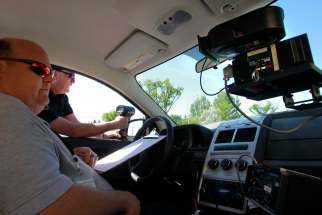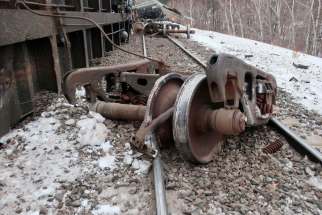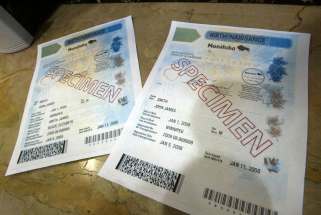Cracked wheel led to 2018 Manitoba train derailment: TSB
Read this article for free:
or
Already have an account? Log in here »
To continue reading, please subscribe:
Monthly Digital Subscription
$0 for the first 4 weeks*
- Enjoy unlimited reading on winnipegfreepress.com
- Read the E-Edition, our digital replica newspaper
- Access News Break, our award-winning app
- Play interactive puzzles
*No charge for 4 weeks then price increases to the regular rate of $19.00 plus GST every four weeks. Offer available to new and qualified returning subscribers only. Cancel any time.
Monthly Digital Subscription
$4.75/week*
- Enjoy unlimited reading on winnipegfreepress.com
- Read the E-Edition, our digital replica newspaper
- Access News Break, our award-winning app
- Play interactive puzzles
*Billed as $19 plus GST every four weeks. Cancel any time.
To continue reading, please subscribe:
Add Free Press access to your Brandon Sun subscription for only an additional
$1 for the first 4 weeks*
*Your next subscription payment will increase by $1.00 and you will be charged $16.99 plus GST for four weeks. After four weeks, your payment will increase to $23.99 plus GST every four weeks.
Read unlimited articles for free today:
or
Already have an account? Log in here »
Hey there, time traveller!
This article was published 13/11/2019 (2221 days ago), so information in it may no longer be current.
OTTAWA — A Winnipeg-bound train transporting petroleum products derailed last year as a result of a cracked wheel that hours earlier had been measured as not meeting American safety limits, according to the Transportation Safety Board.
On Wednesday, the Canadian safety watchdog released the results of its investigation into a CN Rail train that derailed Jan. 6, 2018, near Rennie, 6 1/2 kilometres west of the Ontario border.
Of the 23 cars that left the track, eight were carrying dangerous goods, including hydrocarbons, petroleum distillates and a corrosive liquid. There were no injuries or leaks.
The train derailed at a speed of 80 km/h, as a result of a wheel that had cracked under its surface.
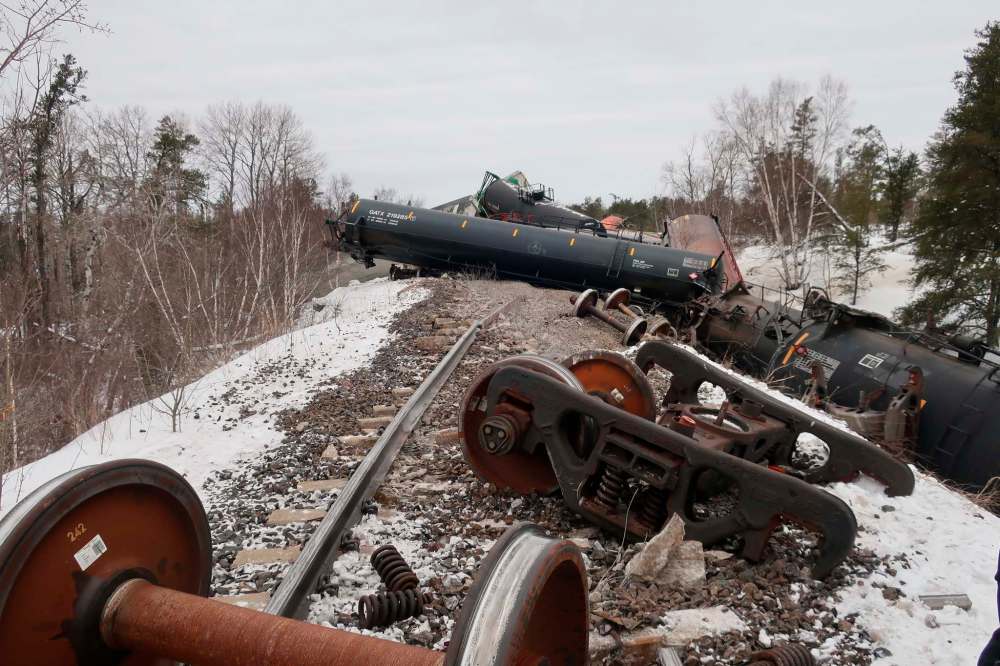
During testing six hours earlier, that wheel failed to meet the impact guidelines used by the Association of American Railroads, a U.S. industry group — but it met the standards of CN Rail.
Under the AAR guidelines, when a detector measures the force of a wheel on the rail to be between 90 and 139 kilopounds (kips), American operators should replace those wheels as soon as possible.
But CN’s own rules set a threshold of roughly 150 kips, depending on weather and speed conditions.

The Winnipeg-bound train passed through a detector in Hudson, Ont., at 7:40 p.m. (CT), which measured the faulty wheel’s impact to be 115.5 kips. The derailment occurred the next day at 1:25 a.m. (CT).
Under CN rules, the wheel would have been replaced at its next point of certified inspection: the Symington yard in Transcona.
Rob Johnston, TSB investigator in charge of the case, said it’s up to railway operators to set their own standards, as neither Canadian nor American law sets those rules.
“There’s absolutely no federal regulation on wayside-inspection systems,” he said, with the exception of VIA Rail and other passenger services needing detectors for overheating bearings. He stressed ultrasonic-testing technology is still developing, particularly for internal cracks.
“To leave the impression that the railways don’t take this seriously is absolutely false. They have a lot of protections in place to prevent against this.”
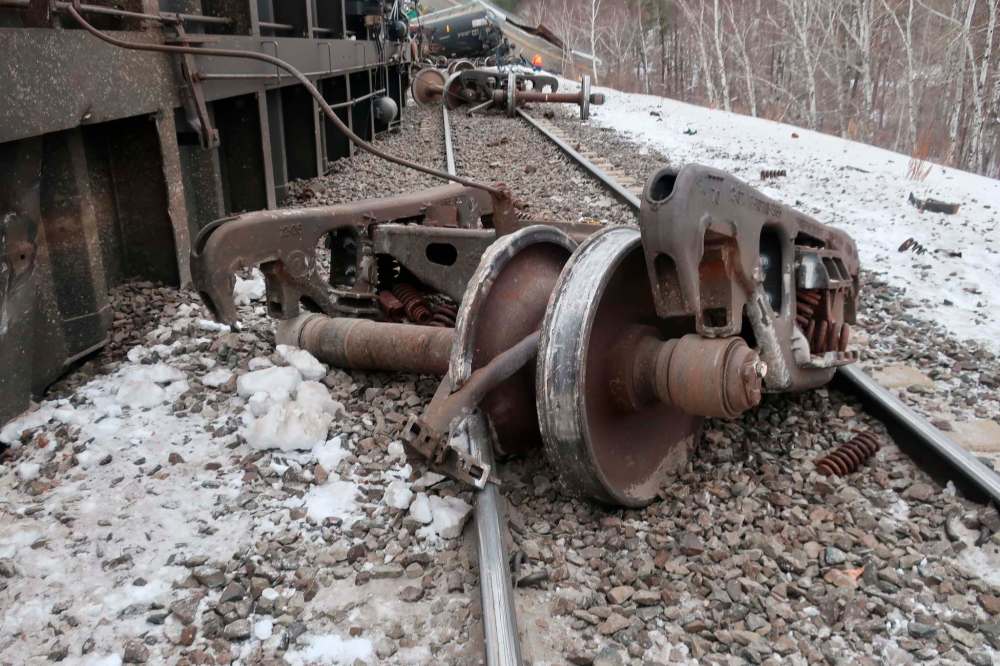
Johnston noted CN uses more wheel-impact detectors than any of the continent’s large railways, which flag hundreds of CN wheels with tread issues the company has preventatively taken off its trains.
But those detectors can’t identify internal cracks, such as the one that resulted in the January 2018 derailment. Indicators of high force suggest something is wrong with the wheel such as dragging, which primarily affect the long-term stability of the rails.
“CN is probably the most active in addressing this issue,” Johnston said. “A lot of that is preventative. But unfortunately, when they do fail, they come under scrutiny.”
The safety board report noted the wheel in question had not met the AAR limits three days earlier, in five separate tests.
The agency is suggesting companies monitor wheels for rising force measurements, instead of just watching for particular points where wheels show high kips.
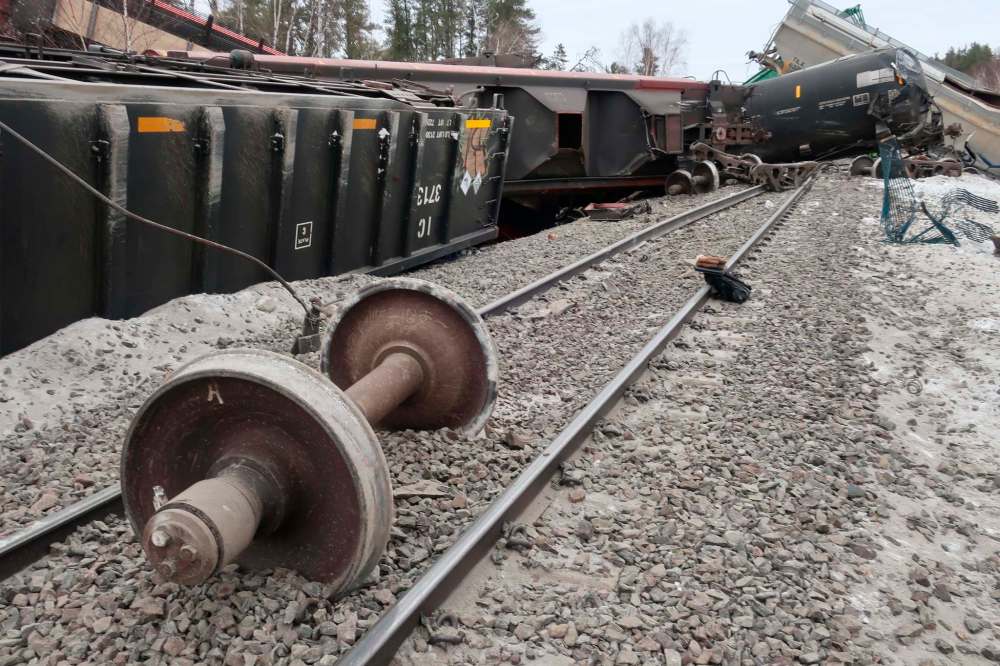
However, a CN spokesman noted the wheel only exceeded 90 kips after leaving the MacMillan yard in Toronto, and it would have been replaced as soon as it reached the next certified-inspection site: Winnipeg.
Alexandre Boulé wrote “99.9995 per cent” of wheels in that scenario have continued “without incidents” to the next inspection site. “Safety is a core value and we take this kind of event very seriously,” he wrote.
At the time of the derailment, the train was heading west along the Reddit subdivision, 127 km toward the Symington yard.
Johnston would not speculate on what would have happened if the wheel had broken within city limits: “We deal with the facts.”
dylan.robertson@freepress.mb.ca
History
Updated on Thursday, November 14, 2019 8:48 AM CST: Amends reference to "near Rennie"

